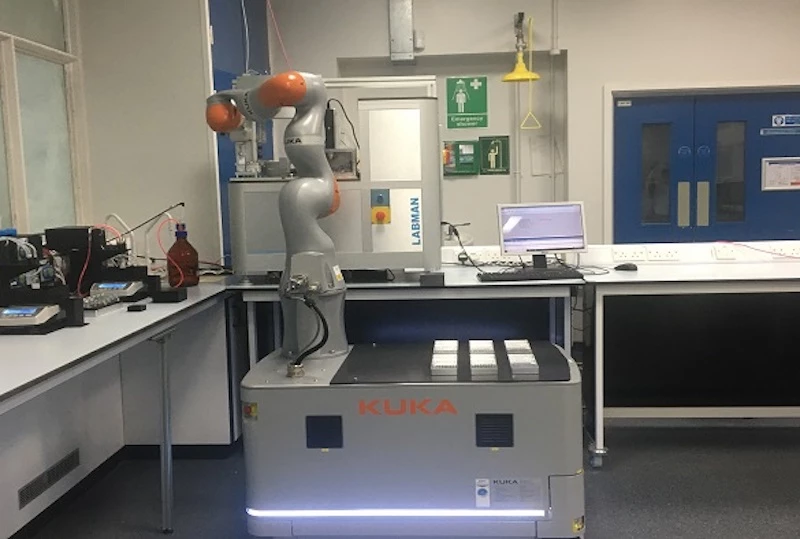Robots are learning to do the jobs of human factory workers, bus drivers, burger flippers, butlers, and healthcare workers, among many others – and now, they may be coming for scientists as well. Engineers at the University of Liverpool have developed a robot scientist that can autonomously perform experiments, analyze results and decide what to do next. And it’s already making new discoveries.
Weighing around 400 kg (882 lb) and standing 1.75 m (5.7 ft) tall, this robot looks much like the mechanical arms you see on many a factory line. But this one has had a few modifications to make it more suited to science, including specialized grippers that let it gently pick up glass vials and push buttons.
The robot rolls around the lab thanks to a lidar system for detection, much like those used in autonomous cars, and is programmed with coordinates for several work stations, where specific tasks are carried out. And once it gets to a work station, it positions itself more precisely over the equipment using touch feedback, by tapping on carefully placed rubber squares..
But like any scientist, the most impressive thing about this robot is its brain. The machine has been programmed with a detailed algorithm that lets it explore some 98 million possible experiments to run, choosing which one to do at any given time based on the results of previous tests. While other robots have been put to work in science labs before, they're usually only performing one task, aren't mobile and aren't making decisions about what to do.

In this first run, researchers at the University of Liverpool let the robot scientist loose in the lab, with the goal of investigating new catalysts for splitting water into hydrogen. The robot can perform every individual step of the experiments, including weighing out solids, dispensing liquids, shining lights, running the reactions, and measuring the hydrogen output. Then, it figures out what experiment to do next, based on how well the previous one worked.
Without any direct guidance from the researchers, the robot ran for eight days straight, working for a total of 172 out of those 192 hours and only pausing for two and half hours a day to recharge its battery. It conducted 688 experiments in that time, and managed to identify a brand new photocatalyst that’s six times more active than others.
“The biggest challenge was to make the system robust,” says Benjamin Burger, first author of the study. “To work autonomously over multiple days, making thousands of delicate manipulations, the failure rate for each task needs to be very low. But once this is done, the robot makes far fewer mistakes than a human operator.”
While the robot might make some scientists a little nervous that their jobs are in peril, the researchers consider it more of a research tool than a human replacement. Humans will still be needed to consider the problems to solve, as well as designing the experiments that the robot will run to reach a solution.
Where the robot excels is in intelligently exploring huge numbers of possibilities. It isn’t feasible to conduct 98 million different experiments, but the algorithm can figure out the best candidates based on previous results and focus on those. Like most robots, it should free up human scientists from some of the menial and repetitive tasks.
The research was published in the journal Nature. Check out the robot scientist in action in the video below.
Source: University of Liverpool




